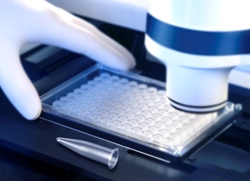Biosolids is organic matter recycled from sewage and is used for agriculture. According to Web Definitions, Biosolids, also referred to as treated sludge, is a term used by the waste water industry to denote the byproduct of domestic and commercial sewage and wastewater treatment. Biosolids are produced primarily through biological treatment of domestic wastewater(4). Biosolids comprise the solids that are removed from the wastewater and further processed before the treated water is released into streams or rivers(1). So, if biosolids goes through the process of sanitizing wastewater treatment solids to control disease-causing organisms and reduce characteristics that might attract rodents, flies, mosquitoes, or other organisms capable of transporting infectious disease; does this exactly make it safe?
The following picture shows the process of biosolids.
"Results revealed that some reported health-related symptoms were statistically significantly elevated among the exposed residents, including excessive secretion of tears, abdominal bloating, jaundice, skin ulcers, dehydration, weight loss, and general weakness. The frequency of reported occurrence of bronchitis, upper respiratory infection and giardiasis were also statistically significantly elevated. the finding suggest and increased risk for certain respiratory gastrointestinal, and other diseases among residents living near farm fields on which the use of biosolids was permitted." -Khuuder, et al., Health Surveys(2). As clearly seen in the picture, biosolids is a potential health hazard, contaminates, may contain hazardous chemicals, decreases property value, and produces an odour.
 However, most researchers agree that the effects of organic compounds, metals, and microorganism in biosolids are not harmful to humans or the environment is managed carefully(3). Is it fair or beneficial that it does not affect the environment but does affect individuals in the society? According to Pollution Issues - Biosolids can be used to fertilize agricultural crops and forests, reclaim mines and disturbed lands cover landfills, and make compost for soil amendment and landscaping. Most biosolids in this country, about 63% are put to beneficial use, and it predicted that this increased up to 70% in 2010. So, exactly why are biosolids desirable? Biosolids add nutrients and organic matter and in addition, they contain all the elements essential for plant growth. Lastly, it improves water infiltration and helps hold water and nutrients for use by plants. This reduces runoff and erosion (3).
However, most researchers agree that the effects of organic compounds, metals, and microorganism in biosolids are not harmful to humans or the environment is managed carefully(3). Is it fair or beneficial that it does not affect the environment but does affect individuals in the society? According to Pollution Issues - Biosolids can be used to fertilize agricultural crops and forests, reclaim mines and disturbed lands cover landfills, and make compost for soil amendment and landscaping. Most biosolids in this country, about 63% are put to beneficial use, and it predicted that this increased up to 70% in 2010. So, exactly why are biosolids desirable? Biosolids add nutrients and organic matter and in addition, they contain all the elements essential for plant growth. Lastly, it improves water infiltration and helps hold water and nutrients for use by plants. This reduces runoff and erosion (3).Therefore, the benefits of biosolids out weight the disadvantages that biosolids may cause. Biosolids are used in many ways. These ways include: Co-generation/ power production/ energy recover, land application in agriculture, road base, land application in forestry operations, land rehabilitation, composition, landfill, and oil from sludge(4). Yes, biosolids raise concern about contaminants in biosolids. Many studies have identified heavy metals, organic pollutants and pesticides in many samples of biosolids. However, these contaminants are necessary from plant growth. I personally believe that biosolids goes through its process, for a reason - to eliminate any potential organisms that might rise health risks. Biosolids have been used in Canada for over 40 years, and why not continue to use them if it is carefully regulated to avoid any issues to arise. Biosolids add nutrients and organic matter and in addition, they contain all the elements essential for plant growth. If biosolids aren't used, what will?
Works Cited:
Comments:- "Agricultural Land Application of Biosolids in Virginia: Production and Characteristics of Biosolids - Home - Virginia Cooperative Extension." Publications and Educational Resources - Home - Virginia Cooperative Extension. 27 Apr. 2011 <http://pubs.ext.vt.edu/452/452-301/452-301.html>.
- "Biosolids - water, effects, environmental, pollutants, United States, EPA, soil, industrial, toxic, world, human, sources, disposal, use, health." Pollution Issues. 27 Apr. 2011 <http://www.pollutionissues.com/A-Bo/Biosolids.html>.
- "Land Application of Sewage Sludge in Pennsylvania - Effects of Biosolids on Soil and Crop Quality — Crop and Soil Sciences." Home — Crop and Soil Sciences. 27 Apr. 2011 <http://cropsoil.psu.edu/extension/esi/biosolids-effects>.
- "Sludge, Sludge treatment, Sludge Disposal, Sewage, Australian New Zealand Biosolids." Australian and New Zealand Biosolids Partnership. 27 Apr. 2011 <http://www.biosolids.com.au/what-are-biosolids.php>.
- "Sludge." Wikipedia, the free encyclopedia. 27 Apr. 2011 <http://en.wikipedia.org/wiki/Sludge>.







